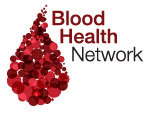SABM Online PBM Certificate Course
Course DescriptionThe Patient Blood Management Certificate Course (PBM-CC) 3rd Edition is now available online! This Course has been refreshed and expanded to include the fundamentals of PBM along with updated concepts, literature and, as always, aligned with the SABM Standards. The PBM-CC is ideal for physicians, nurses and other healthcare professionals looking to grow their foundational knowledge and skills in PBM. Offering fundamentals in PBM to advanced concepts by clinical specialty, the updated PBM CC-3rd Ed also introduces the concept of ‘Blood Health’ and establishes new foundations focused on patient centered care. The PBM-CC was created by recognized clinical experts in the field of PBM. The immersive and comprehensive learning experience offers administrative guidance, PBM program principles, clinical concepts, and best practice applications that align with the SABM Administrative and Clinical Standards. Whether a physician, nurse, perfusionist, laboratory professional, physician assistant, advocate, or administrator, this course provides participants with the knowledge and tools needed to support PBM initiatives and programming within their healthcare institutions. Fee Information: $350 USD
Course highlights include:
Course DetailsCourse Title: SABM Online Patient Blood Management (PBM) Certificate Course with Exam, 3rd Edition Faculty
Target AudienceThis activity is intended for physicians, registered nurses, physician assistants, perfusionists, pharmacists, laboratory professionals, allied health professionals, healthcare administrators and patient advocates to expand knowledge and skills in the field of Patient Blood Management. Educational ObjectivesAfter completing this activity, the participant should be better able to:
Computer System RequirementsTalent LMS recommends Google Chrome, but other modern web browsers (Internet Explorer 7+, Mozilla Firefox, Apple Safari) may be used. DisclaimerParticipants have an implied responsibility to use the newly acquired information to enhance patient outcomes and their own professional development. The information presented in this activity is not meant to serve as a guideline for patient management. Any procedures, medications, or other courses of diagnosis or treatment discussed or suggested in this activity should not be used by clinicians without evaluation of their patient’s conditions and possible contraindications and/or dangers in use, review of any applicable manufacturer’s product information, and comparison with recommendations of other authorities. |




